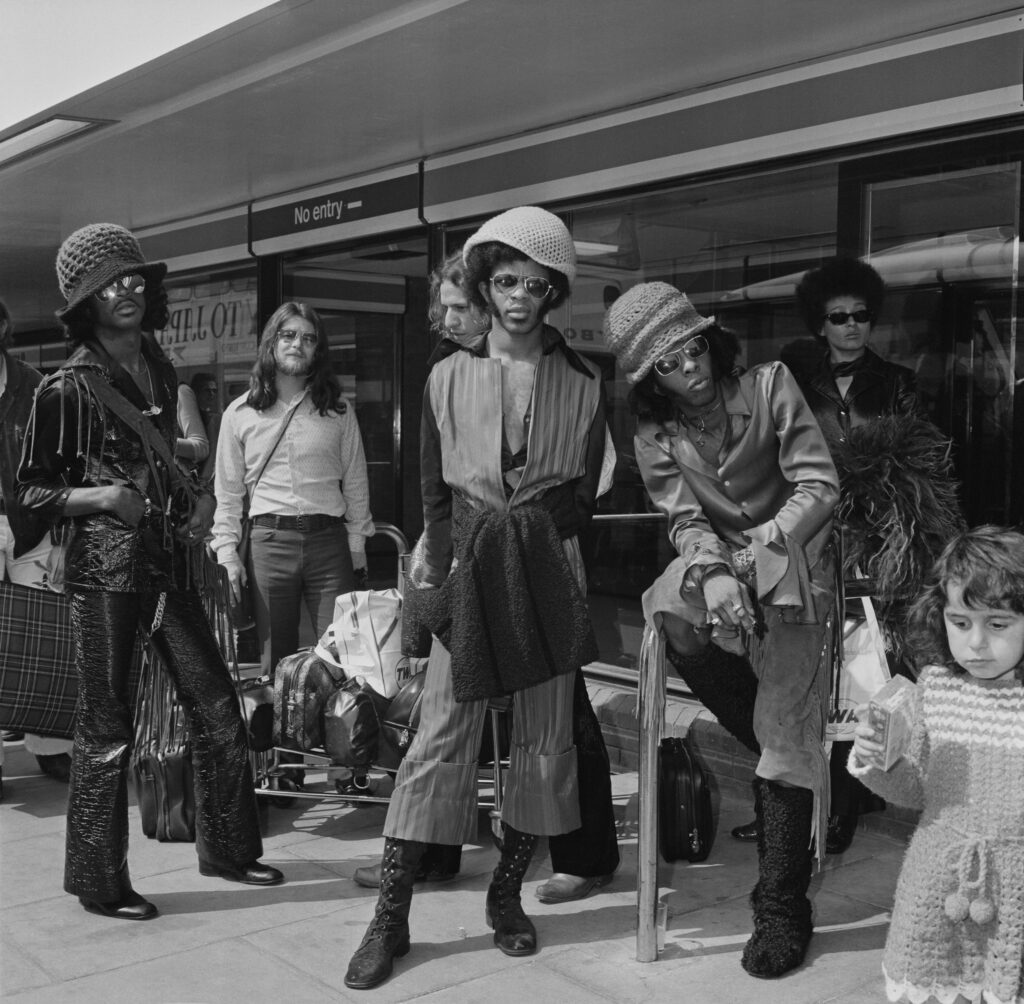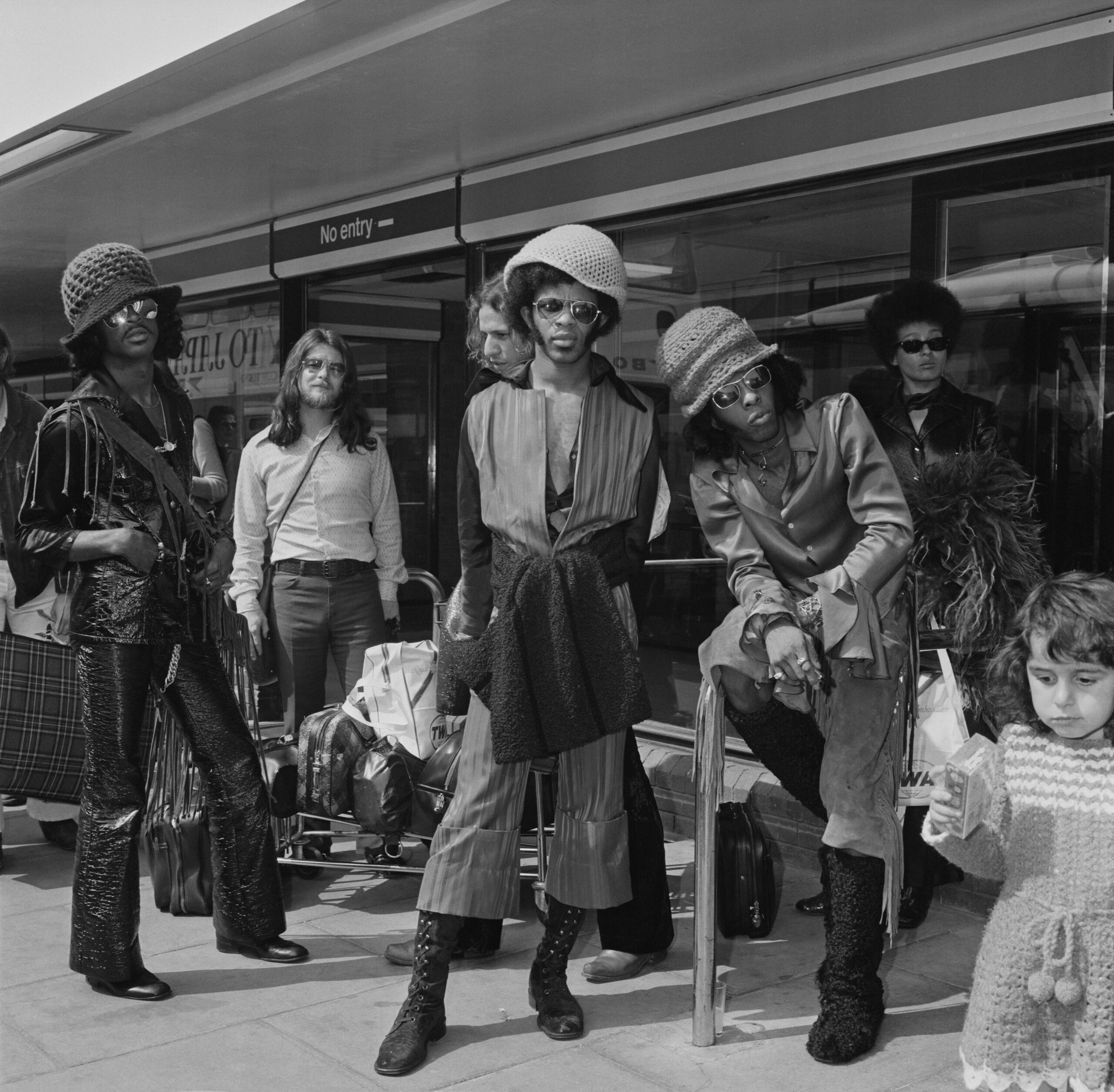On June 9, the music industry lost an incredible talent. Sly Stone, leader of the funk band Sly and the Family Stone passed away due to complications with COPD and other health issues at age 82. The California native changed the sound of R&B, fusing rock, soul and his signature vocals. But despite his success, Stone battled addiction for years, a struggle that ultimately led to the band's breakup.
Suggested Reading
But the man Bootsy Collins called, "the most talented musician I know," left an undeniably significant impact on music, sampled by artists including Janet Jackson, KRS-One and A Tribe Called Quest. This is the story of the highs and lows of singer-songwriter and music legend Sly Stone.
He Grew Up Singing With His Siblings

Sylvester Stewart was born on March 14, 1943, in Denton, Texas. The second of five children, his family relocated to Vallejo, California, a suburb of San Francisco, when he was young. Sly and his siblings grew up singing gospel classics from artists like Mahalia Jackson, and he learned to play multiple instruments – keyboards, guitar, bass, and drums – before he was 11 years old.
"Music was as much a part of our home as the walls or the floor," he wrote in his 2024 memoir, "Thank You (Falettinme Be Mice Elf Again)."
He Was a DJ

While studying at Vallejo Junior College, Sly got a job at KSOL, the local R&B station. Hosting a show from 7:00 pm to midnight, he settled on the name that the rest of the world would come to know him by – Sly Stone.
"Sly was strategic, slick. Stone was solid," he wrote.
Stone made some unconventional choices, mixing music from acts like The Beatles and The Rolling Stones with the R&B and soul hits he played during his shows. Although his listeners didn't always understand his song selections, he says he just played what he thought sounded good.
"Some KSOL listeners didn't think an R&B station should be playing white acts. But that didn't make sense to me. Music didn't have a color. All I could see was notes, styles and ideas," he wrote. "I tried to learn from it."
Making the Band

When he wasn't on the radio, Stone was the leader of a band called Sly And the Stoners, which featured Cynthia Robinson, a Black woman, on the trumpet. At the same time, Sly's brother Freddie had a band of his own, Freddie And the Stone Souls, which featured white drummer Gregg Errico and white saxophonist Jerry Martini. The two eventually combined their acts, adding their sister Rose and bassist Larry Graham, and in 1967, Sly and the Family Stone was born. It was a trailblazing group, one of the first to be fully inclusive with musicians who were Black and white, male and female.
"Dance to the Music"
In 1968, the band scored their first of 16 Billboard Hot 100 hits with "Dance to the Music." The song, with few lyrics and lots of bass, peaked at number 8 on the chart in April of that year.
"'Dance to the Music was pure energy beamed out for exactly three minutes, perfect pop song length," Sly wrote.
Undeniable Style

While most Black music acts at the time, like The Temptations and The Four Tops were known for performing in well-tailored suits, Sly Stone had a style all of his own, which usually featured colorful costumes, hats and statement accessories.
“He had a look,” Questlove wrote in the foreword to Stone's memoir. ”He loved an accessory: a necklace, an arm band and, especially, a hat.
He Rocked Woodstock
Sly and the Family Stone gave fans another memorable performance on August 17, 1969 when they took the stage at Woodstock, the legendary outdoor concert in Bethel, New York which featured some of the most popular acts of the time, including Jimmy Hendrix, the Who and Janis Joplin.
Their set was one of the most amazing things I've ever witnessed. Was 3AM and after the Dead and Creedence, people were dozing. Then this happened and instantly the entire crowd was on its feet dancing," wrote one fan on YouTube about the experience.
And The Summer of Soul

While most people were at Woodstock during the summer of 1969, Black folks had a festival of their own in New York City. From June 29 to August 24, fans gathered in Marcus Garvey Park for the Harlem Cultural festival, which featured performances from artists like Stevie Wonder, Nina Simone and The Staple Singers. Sly and the Family Stone performed at the concert, which was intended to be an opportunity for the community to mourn the loss of legendary civil rights leader Dr. Martin Luther King, Jr., who was assassinated in 1968.
Questlove used never before seen footage from the event to create the 2021 documentary, "Summer of Soul."
The Family Was Nowhere to Be Found on "Family Affair"
The band scored another hit in 1971 with "Family Affair." The track shot up to number one on the Billboard hot 100 in December of that year.
But by the time the song was released, the band was a shell of its former self. In his autobiography, Stone wrote that many of the original band members had been swapped for others, including Bobby Womack who played rhythmic guitar on the song and Billy Preston who played a Pianet. Sly added his vocals after drinking with friends at a party in his home.
"My voice was almost gone, so hoarse I had to ride in on it, but I made it do what I needed it to do. I was thinking not just about the Family Stone but about all families," Sly wrote. "It posed like a band song, from the title on down. But most of the Family Stone was nowhere to be found."
The 1970s: A Turbulent Time

By the early 1970s, things were difficult for Sly and the band, who faced pressure from a changing music industry that included the rise of disco, internal conflict and Sly's drug use, which led to his unpredictable behavior, including cancelling shows at the last minute.
He Had Beef With Drake's Uncle

One of the most talked about conflicts within The Family Stone was between Sly and Larry Graham, the bass player who pioneered the slap bass technique heard in many of the group's songs. Graham also happens to be rapper Drake's uncle. As the group unraveled, rumors swirled that the musicians' entourages frequently had beef, which escalated until November 1972, when Graham left the group.
"I don't blame [Graham] for leaving either," Sly wrote in his book. "You don't know everything about a person's attitudes and aspects. Just because someone has been in the same place for a long time doesn't mean that they should be there longer. There are times to stay and times to move."
Getting Married at The Garden

Stone was only married once, to model Kathy Silva. Although they split after only two years, their wedding was one for the books. The couple, who shared a son, Sylvester Stewart Jr, said "I do" on stage in front of a crowd at Madison Square Garden in June 1974. The best part - guests were treated to a concert after the nuptials. The after party was a reception at the Waldorf Astoria New York, which Sly remembered had lines of people trying to get in.
"The party was drinking and dancing and smoking and joking, until the late hours and then the early hours, the kind of thing you remember only from the pictures you see afterward," Sly wrote about the reception in his book.
He Didn't Mind Being Sampled
Sly and the Family Stone made seven studio albums, and the band's music has been sampled by countless hip hop artists, including Queen Latifah, KRS-One, A Tribe Called Quest and Public Enemy.
"Sampling didn't bother me. I liked it. I was flattered. Music was a universal donor. It was for everyone. Let them spread it wide," he wrote.
He Had Financial Troubles

Sly remained out of the public eye for most of the 1990s and 2000s. In 2011, the New York Post reported that he was homeless and living in a van in Los Angeles, due to a combination of drug use and financial mismanagement.
Addiction Led to His Downfall

In his memoir, Sly Stone reflected on how he used drugs for years to cope with the stress brought on by the physical and creative demands of his career. But toward the end of his life, numerous hospital stays and health issues led to his decision to get sober.
"But I should have stopped sooner. Much sooner: less dust and powder, fewer rocks and pipes, enough days given back that might have added up to years," he wrote.
Straight From 
Sign up for our free daily newsletter.


